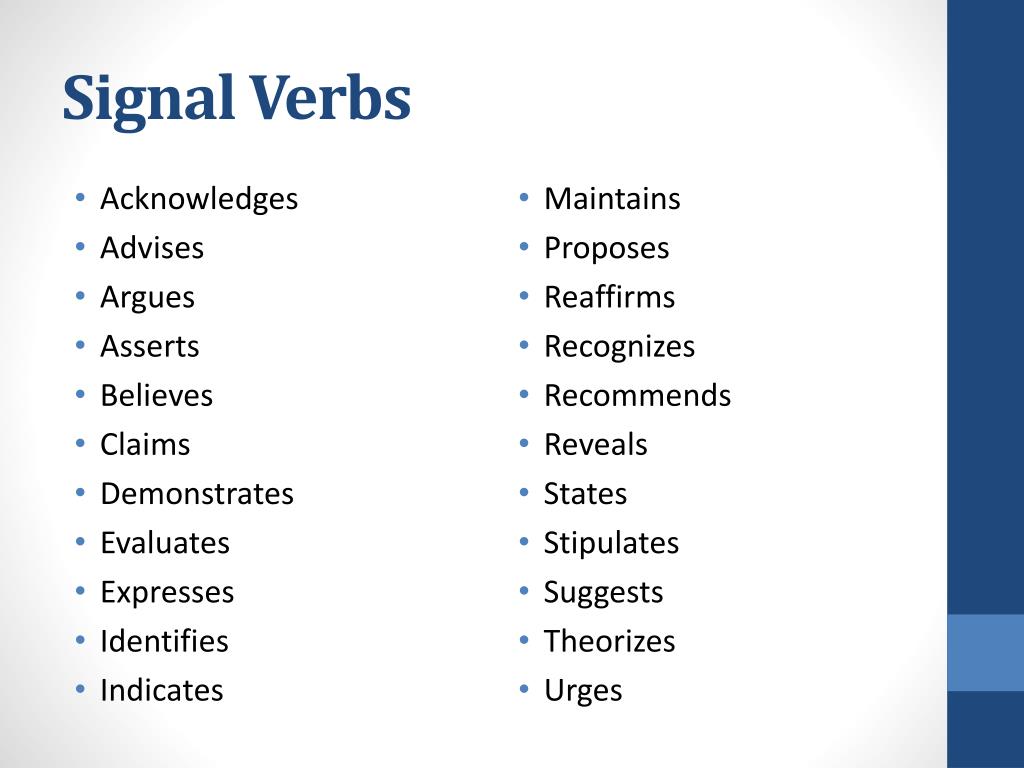


In many instances, signal phrases will contain only the last name of the author of the source text (as opposed to the author’s first and last name). Referring to the Author within a Signal Phrase A signal phrase may also include information explaining an author’s credentials and/or affiliations as well as the title and/or publisher of the source text. Signal phrases can also be used as meaningful transitions, moving your readers between your ideas and those of your sources.Ī signal phrase consists of an author’s name and an active verb indicating how the author is presenting the material. It is important to use signal phrases to clearly attribute supporting evidence to its author or authors and to avoid interrupting the flow of an essay. Argumentative SynthesisĬhapter 6: Thinking and Analyzing RhetoricallyĦ.4 Rhetorical Appeals: Logos, Pathos, and Ethos DefinedĦ.6 Moving Beyond Logos, Pathos, and Ethos: Speech Act TheoryĬhapter 7: Multimodality and Non-Traditional Textsħ.3 Multimodal Texts and Rhetorical Situationsĭeeper Reading: “An Introduction to and Strategies for Multimodal Composing”Ĩ.2 Basic Structure and Content of ArgumentĨ.3 Types of Evidence in Academic ArgumentsĨ.5 Failures in Evidence: When Even "Lots of Quotes" Can't Save an Paperĭeeper Reading: Counterargument - "On the Other Hand: The Role of Antithetical Writing in First Year Composition Courses"ĩ.3 Basic Guidelines for Research in Academic Databasesĩ.4 Using Effective Keywords in your Researchĩ.5 Keeping Track of Your Sources and Writing an Annotated Bibliographyġ0.1 Types of Sources: Primary, Secondary, Tertiaryġ0.5 Conducting Your Own Primary Researchĭeeper Reading: "Reading Games: Strategies for Reading Scholarly Sources"Ĭhapter 11: Ethical Source Integration: Citation, Quoting, and ParaphrasingĬhapter 12: Documentation Styles: MLA and APAĬhapter 13 Additional Readings and ResourcesĪppendix A: Troubleshooting: Body Paragraph DevelopmentĪppendix B: Additional Synthesis ExamplesĪ Guide to Rhetoric, Genre, and Success in First-Year WritingĪ signal phrase, also known as an attributive tag, is a device used to smoothly integrate quotations and paraphrases into your essay.

Chapter 3: The Writing Process, Composing, and Revisingģ.6 Peer Review and Responding to Others’ Draftsģ.7 Proof-Reading and Editing Your Final Draftĭeeper Reading: "What Is Academic Writing?"Ĭhapter 4: Structuring, Paragraphing, and StylingĤ.6 Breaking, Combining, or Beginning New ParagraphsĤ.7 Transitions: Developing Relationships between IdeasĤ.10 A review of the five-paragraph essayĤ.11 Moving Beyond the five-paragraph formatĬhapter 5: Writing a Summary and Synthesizingĥ.3 Make Connections When Synthesizing in Your Writingĥ.4 Informative vs.


 0 kommentar(er)
0 kommentar(er)
